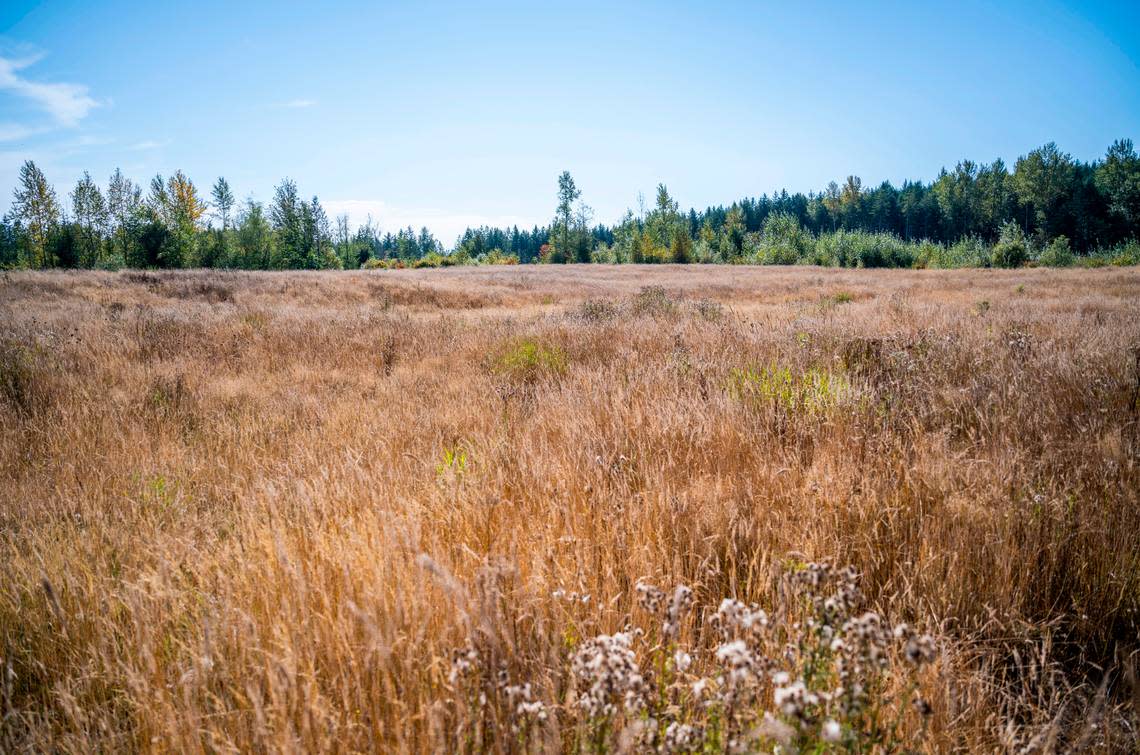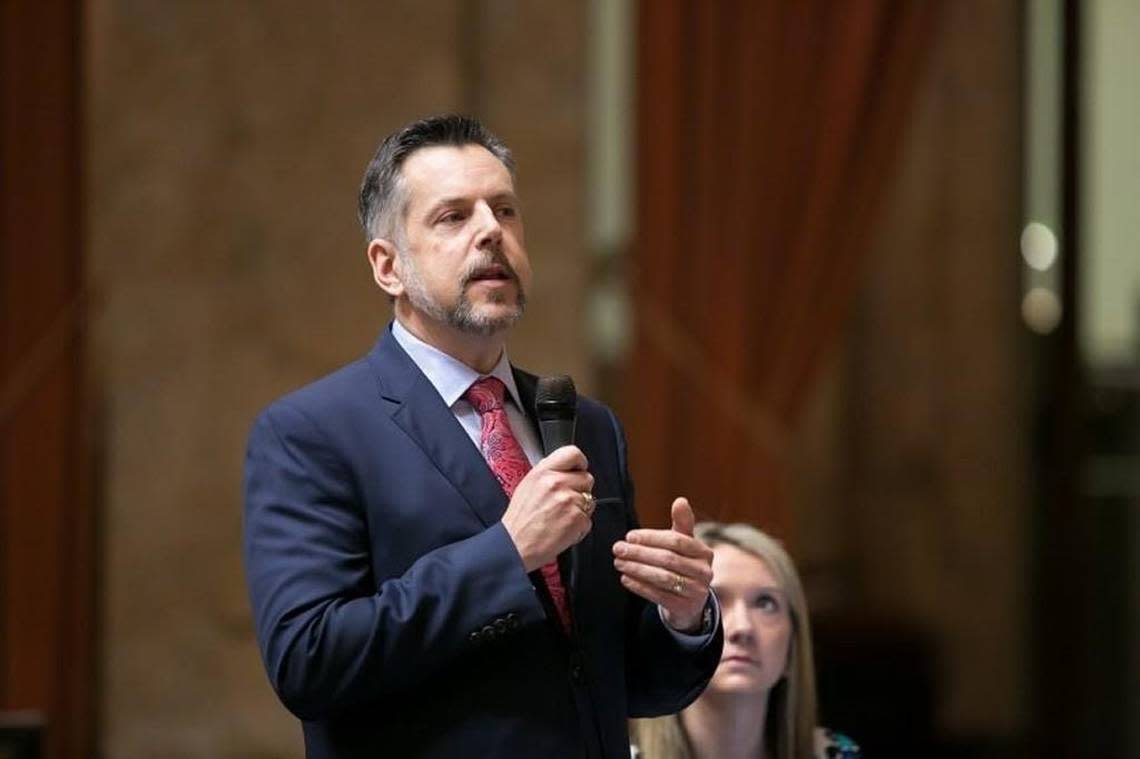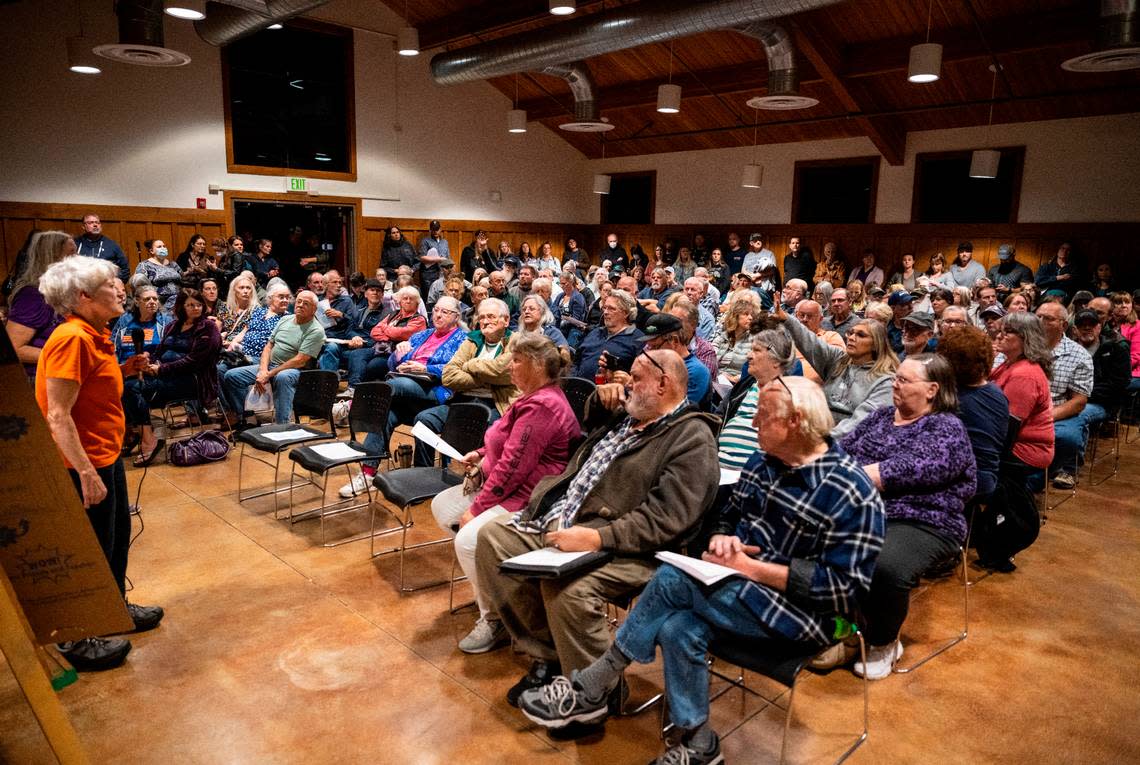‘Deeply flawed.’ Why a reset button on Pierce County airport talks could be up for debate
Some Washington state lawmakers seek to restart the three-year process that resulted in rural Pierce County becoming a contender for Puget Sound’s next major airport, citing concerns that the COVID-19 pandemic too deeply affected the search for a suitable location.
Rep. Tom Dent, R-Moses Lake, told The News Tribune that he hopes to introduce legislation next month that would essentially hit the reset button.
Dent is a non-voting member of the Commercial Aviation Coordinating Commission, a state-created body tasked by the Legislature with identifying an appropriate airport site. Its work had just begun when the pandemic struck in early 2020.
Dent argued that the public health crisis interfered with the commission’s ability to conduct a thorough review and perform the community outreach necessary for an undertaking of a new airport’s magnitude.
“If we don’t do it right, then it’s not going to happen, unless you just want to run over the will of the people, and I’ve got a problem with that,” he said.
The commission is expected in June to recommend to the Legislature a location for potentially siting a two-runway airport. Dent said his bill would delay homing in on any specific site for at least a few years.
A postponement would signal a short-term victory for opponents of two greenfield sites under consideration in Pierce County and another in Thurston County. The three locations were chosen as finalists in September from a list of 10 undeveloped areas that had been studied, drawing opposition from local government leaders and residents.

To others, starting over would simply mean kicking the proverbial can down the road and again delaying the inevitable need for additional commercial passenger and cargo transportation in the region as officials try to meaningfully respond to projected near-term capacity issues at Seattle-Tacoma International Airport.
“It’s a crisis, and we need to own it and face up to it,” state Sen. Karen Keiser said.
Keiser, D-Des Moines, sponsored the bill that created the commission and directed it to single out a potential landing spot for a new airport, which, if tapped for Pierce County, could see as many as 20 million annual passengers.
While Keiser agreed the pandemic restricted face-to-face engagement, she noted there were significant efforts to inform the public through news releases, emails and the commission’s website. She said that public outreach has increased since greenfield options were narrowed to three.
Discussions about the need for another airport dated back 30 years but, until now, the topic had been shrouded in “this sort of veil of denial,” Keiser said. She added that honest — even if uncomfortable — conversations were finally occurring because of the commission’s work.
“We’ve got to do some decision-making now,” she said.
As the commission stares down a June decision, there have been “red lights” at practically every turn, according to Rob Hodgman, senior aviation planner for the state Department of Transportation’s Aviation Division, which is providing the commission with staff support and technical assistance.
That includes local opposition, limitations on sites that can be considered and significant logistical issues with the remaining greenfield options under review, Hodgman said. Three years into the process, he said that it is discouraging that “pretty big hurdles” still need to be cleared.
“We’re six months away, and we still don’t have a viable solution,” he said, later adding: “No one wants to cause harm. That’s why it’s the impossible problem to solve.”
Lawmakers question process
The commission adopted its charter in January 2020. Two months later, it was starting to consider the evaluation criteria for finding a proper location when COVID-19 spurred shutdowns across the United States.
The site-selection process, put into motion by a 2019 directive from the Washington Legislature, has since continued in a manner dictated by the public health crisis. In-person meetings shifted to online. Public engagement has been virtual. There were no field trips to view potential sites, according to Dent.
The way in which the decision unfolded to target Pierce and Thurston county greenfield sites has concerned state lawmakers in the Pierce County legislative delegation.
“The process was deeply flawed,” said House Republican Leader Rep. J.T. Wilcox, R-Yelm, who will be supporting Dent’s bill.

Rep. Andrew Barkis, R-Olympia, the ranking Republican on the House Transportation Committee, will be among the bill’s sponsors, according to his aide, Kaden Sanne.
“He does not believe adequate time and community engagement have been considered,” Sanne said in an email, speaking for Barkis who was out of the country. “While he understands the capacity issues brought forth by the Aviation Commission, he does not believe the proposed sites are a good solution.”
Rep. Jake Fey, D-Tacoma, said the process deserved closer examination, citing lack of public outreach and more questions that needed to be answered. Fey, who chairs the House Transportation Committee, said he was not yet convinced that the greenfield sites under deliberation make the most sense and wanted the state’s role in the process more clearly defined.
He said he also sought new estimates on air travel demand and a more comprehensive review of airport plans in general.
“In my mind, it’s more than just more time, it’s a more careful look at the whole situation,” he said, adding that he would reserve an opinion on Dent’s bill until he sees it. “It’s more about doing things right in terms of a process so that enough people will have confidence that the process was done correctly.”
No one faulted the commission or others for any process shortcomings, and state lawmakers said that work already undertaken by the commission and consultants would be useful going forward.
Hodgman said that all who have been involved in the process have tried to be as transparent as possible and do the best work they can, including through “tremendous” outreach efforts to the general public, tribes, government officials and state lawmakers.
He also defended air travel and population growth projections that he acknowledged have been questioned by some, saying that state consultants, Kimley-Horn and Ricondo, and the Puget Sound Regional Council used credible and proven methods of forecasting.
A May 2021 study by the council revealed that the region is projected by 2050 to see 27 million more annual passenger boardings than it can accommodate and double the current demand for cargo.
Based on consultant projections, Sea-Tac and Snohomish County Airport (Paine Field) are expected to reach capacity by 2032.
Movement not imminent, but hoped
Without action, Hodgman and Keiser warned of economic consequences and travel inconveniences as Sea-Tac becomes encumbered.
By waiting three or four more years to arrive at a site decision, Keiser feared that options would narrow as more development occurs. There was no space remaining in King County, she added. The county was precluded in her bill from being considered for any sites.
Keiser, who represents the city of SeaTac, said that she has sought to protect her constituents from even more air traffic, noting that King County property owners already pay a tax for aviation. Recalling her community’s historical battles with Sea-Tac operator, Port of Seattle, she also said it was important that no project be ramrodded into place against the will of locals.
To that point, it remains “an open question” on whether the state Legislature will act on any recommendation from the commission during the 2024 session, which would be its earliest opportunity to do so, she said.
“If we have stiff opposition, I would say things are probably dead on arrival,” she added.
Keiser underscored that the next major airport envisioned to land in Puget Sound, slated to be operational by 2040, is not expected to be like airports of yesteryear. A commission report to the state in October made that clear, pointing to “an ‘Airport of the Future’ approach that addresses harmful emissions and noise.”
The commission said it recommended an airport using emission- and noise-reduction measures and that the state embrace environmentally friendly technologies, accelerate its adoption of alternative aircraft-propulsion systems and fund developments for bio-jet fuel.
The same month the report was released, more than 125 residents filed into the Frontier Park Lodge in Graham to voice concerns: They said they had only recently found out about airport deliberations; they worried about losing their homes; and they objected to noise and traffic disrupting their rural lifestyle in an area that they described as unequipped to support a project of that scale.

In October, the Pierce County Council and county Executive Bruce Dammeier objected to siting an airport either south of Graham or east of Roy, penning a letter that outlined concerns over lacking infrastructure and transit service and the potential for pollution of a main drinking-water source.
“I would just love to have some say, ‘Well, here’s an option,” Keiser said, acknowledging the bevy of objections that have been lodged.
For all the local distress over talks of an airport, the city of Yakima recently came forward to divulge its interest in having Yakima Air Terminal-McAllister Field studied as a potential option, according to city spokesperson Randy Beehler.
Beehler said that the city found a regional airport attractive for the economic boost it could provide and potentially feasible because the city already has invested in its airport and surrounding infrastructure.
He added that the city had yet to hear any definitive response from WSDOT Aviation regarding its inquiry.
“It’s very, very preliminary,” he said.
It is worth noting that the commission has recommended looking at airports in Washington that want to add to existing regional air transportation service. Beyond its consideration of three greenfield sites, the commission is also reviewing expanding Paine Field.
